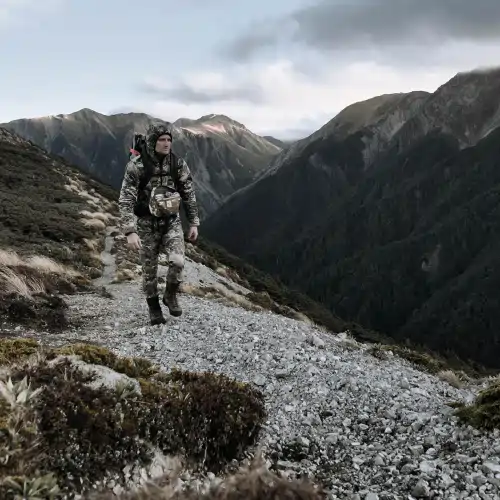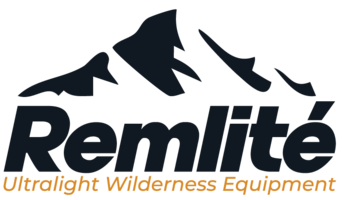Gearing Up for Wilderness Hunts
Ultralight Backpacking for Hunters
New Zealand Backcountry Gear Guide
Explore the benefits of ultralight backpacking for New Zealand hunters. Remlite NZ shares expert tips on gear, strategy, and backcountry success.
Gearing Up for Wilderness Hunts
When we step into New Zealand’s backcountry, the margin for error is slim. The rugged landscapes, unpredictable weather, and long distances challenge both body and equipment. That is why we prioritise ultralight backpacking principles when planning hunts. Carrying less weight means conserving energy, covering more ground, and staying focused on the pursuit rather than the strain of the pack.
Every gram we shave from our kit translates into endurance and mobility. Traditional heavy gear can slow us to a crawl; an ultralight approach allows us to climb higher, travel deeper, and adapt faster. At Remlite, our mission is to equip New Zealand hunters with gear that enhances safety, performance, and enjoyment in the wild.
Why Ultralight Matters in the Field
The wilderness demands respect. Long ascents through alpine passes, river crossings in swollen streams, and nights under fast-changing skies all take their toll. Heavy packs add unnecessary risk, making us slower and more fatigued at critical moments. By shifting to ultralight backpacking, we reduce physical strain and increase our efficiency in the field.
Less weight also improves recovery. After long days of climbing or stalking, our bodies face less stress; this enables us to hunt effectively day after day. In remote areas, where weather and terrain push us to the limit, every bit of energy saved makes a difference.

Core Gear for Ultralight Hunts
Ultralight systems begin with the pack. A well-designed backpack distributes weight evenly, resists New Zealand’s harsh conditions, and supports comfort over multi-day hunts. From there, we prioritise shelters that deliver maximum protection at minimal weight. Tents, tarps, and hammocks give us options depending on terrain. Dual-use equipment adds further value; every item must justify its place in the kit.
Sleeping systems follow the same principle. Compact mats and quilts provide warmth without bulk, designed for alpine nights or damp coastal environments. When combined with strategic layering, these systems keep us warm while allowing freedom of movement.
Layering for New Zealand Conditions
Hunting in New Zealand is unlike anywhere else. A clear morning can shift into a rainstorm by midday and snow by nightfall. Our clothing strategy must account for constant change. We begin with technical base layers, often merino, for temperature regulation and odour resistance. Ultralight insulation layers then provide warmth when the mercury drops. Finally, a waterproof and breathable shell keeps us dry and protected from biting winds.
This layering approach is versatile, enabling us to adapt on the move. Each piece is lightweight yet durable; together they form part of a broader ultralight backpacking system that prepares us for any condition.
Food, Hydration, and Efficiency
Nutrition and hydration are often overlooked; however, they weigh heavily on backcountry hunts. We opt for freeze-dried meals that pack calories without bulk. Compact stoves and cookware make meal preparation efficient and reliable. For hydration, purification tools are indispensable. Carrying litres of water is impractical; lightweight filters and tablets ensure safe access to streams and rivers.
By reducing the weight of food and water systems, we extend our range and improve endurance. Every item earns its place; nothing comes along without a clear purpose.
Stealth, Silence, and Success
Ultralight gear does more than cut weight; it sharpens our stealth. Moving quietly through dense bush or across scree fields requires minimal noise from clothing and packs. Advanced fabrics reduce rustling, giving us the advantage when closing distance on wary game. Combined with less bulk, this allows us to move with precision, staying undetected in demanding environments.
With New Zealand ultralight backpacking principles, we carry less but achieve more. We remain agile, silent, and capable of enduring longer hunts without compromise.
Safety in Remote Terrain
Backcountry hunting is not just about the pursuit of game; it is about survival. Weather shifts rapidly, rivers rise unexpectedly, and trails vanish into mist. Ultralight does not mean unprepared. Our systems are designed to reduce weight without sacrificing essentials like navigation tools, emergency shelters, and first-aid kits.
Every decision is calculated. By carrying efficient, multi-functional gear, we maintain safety while keeping loads manageable. Experience has taught us that confidence in our equipment builds confidence in the hunt.
Remlite’s Role in Ultralight Backpacking
At Remlite, we specialise in sourcing and testing gear that meets the demands of New Zealand’s backcountry. Our range of ultralight packs, shelters, clothing, and accessories is chosen with one goal: to help hunters and adventurers go further with less weight. Each product is backcountry-tested, ensuring it performs where it matters most.
We know these landscapes because we hunt them ourselves. From Fiordland to the Tararuas, we put every piece of gear through real-world trials. This experience shapes the advice we share and the products we recommend. Ultralight is not a trend; it is a proven strategy for safer, more successful hunts.
Final Perspective
Preparing for wilderness and backcountry hunts demands more than skill with a rifle or bow. It requires thoughtful planning, efficient systems, and reliable gear. By adopting ultralight backpacking principles, we transform our approach. We move faster, conserve energy, and maintain focus; this gives us the edge in New Zealand’s most challenging environments.
At Remlite NZ, we are committed to equipping hunters with the best tools for the journey. With every gram saved, every smart choice made, and every kilometre travelled lighter, we create opportunities for longer, safer, and more rewarding adventures in the backcountry.
